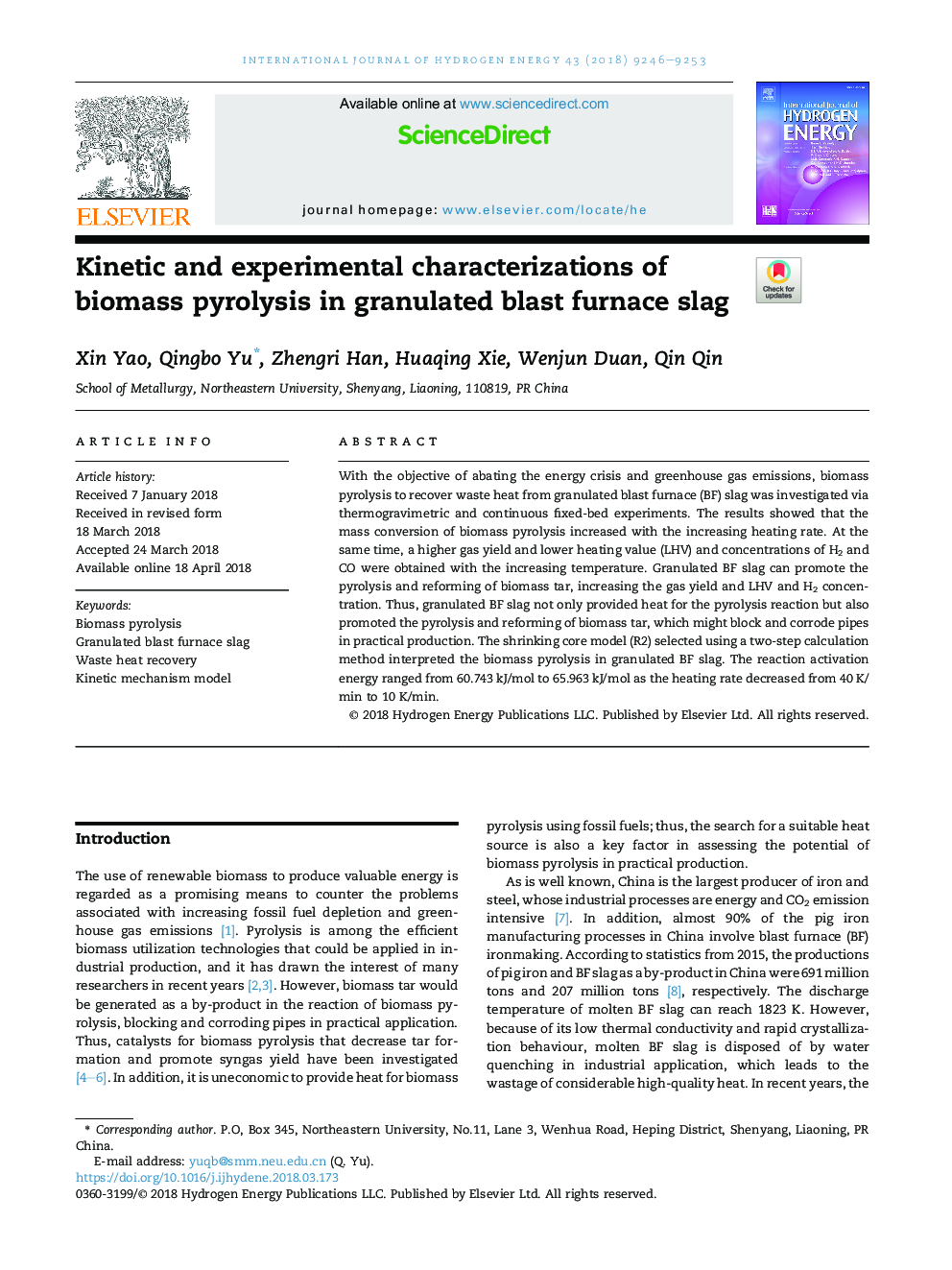| Article ID | Journal | Published Year | Pages | File Type |
|---|---|---|---|---|
| 7706123 | International Journal of Hydrogen Energy | 2018 | 8 Pages |
Abstract
With the objective of abating the energy crisis and greenhouse gas emissions, biomass pyrolysis to recover waste heat from granulated blast furnace (BF) slag was investigated via thermogravimetric and continuous fixed-bed experiments. The results showed that the mass conversion of biomass pyrolysis increased with the increasing heating rate. At the same time, a higher gas yield and lower heating value (LHV) and concentrations of H2 and CO were obtained with the increasing temperature. Granulated BF slag can promote the pyrolysis and reforming of biomass tar, increasing the gas yield and LHV and H2 concentration. Thus, granulated BF slag not only provided heat for the pyrolysis reaction but also promoted the pyrolysis and reforming of biomass tar, which might block and corrode pipes in practical production. The shrinking core model (R2) selected using a two-step calculation method interpreted the biomass pyrolysis in granulated BF slag. The reaction activation energy ranged from 60.743Â kJ/mol to 65.963Â kJ/mol as the heating rate decreased from 40Â K/min to 10Â K/min.
Related Topics
Physical Sciences and Engineering
Chemistry
Electrochemistry
Authors
Xin Yao, Qingbo Yu, Zhengri Han, Huaqing Xie, Wenjun Duan, Qin Qin,
